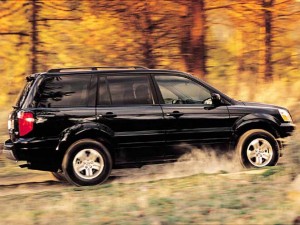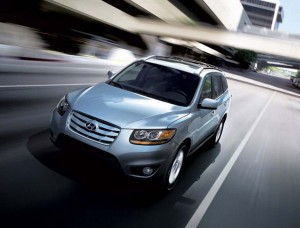After a steady, decade-long decline, the number of automotive recalls has taken a surprisingly sharp jump over the last several years – most analysts pointing to the backlash over Toyota’s unintended acceleration scandal that, in 2009 – 10 led the maker to call back 14 million vehicles.
While Toyota this week announced its largest single recall ever – 7.5 million vehicles, a third of those in the U.S. due to a potential fire hazard – it’s cross-town rival Honda that has been especially hard hit by safety issues over the last two years. And the situation only appears to be getting worse.
The National Highway Traffic Safety Administration is opening an investigation into 87,000 Honda Pilot SUVs sold during the 2005 model-year. The safety agency has received complaints that suggest the Pilot’s electronic stability control system may suddenly act up, leading to deceleration, with steering pulling to one side. Making matters worse, the complaints indicate the brake lights don’t illuminate which could lead to a rear-end collision – especially in a situation where vehicles have been reported coming to a near-stop from highway speeds.
“The NHTSA’s Office of Defect Investigations (ODI) has found a total of 35 reports, including the petitioner’s complaint, that appear to be related to inappropriate stability control system activation in the 2005 Honda Pilot,” noted the North Carolina Consumers Council – which said the first complaint dated back to 2006 though 10 have been reported over the last 12 months.
The North Carolina group last week was told by NHTSA that the safety agency has begun a separate investigation covering about 600,000 Odyssey minivans and Pilot SUVs because of concerns about defective ignition locks that could permit vehicles to roll away. The complaint contends a defective shift interlock could permit the keys for those vehicles to be removed without shifting the minivan and SUV models into Park.
It’s unclear whether NHTSA will find an actual defect with either of the new investigations. It is also possible that it could extend those probes to cover other models and model-years. That happened with the latest Toyota recall. Following an investigation into 800,000 vehicles equipped with potentially faulty window switches the maker will now recall about a dozen models that generated 2.5 million sales in the U.S.
Honda already addressed a potential inadvertent braking problem when it updated the electronic brake control systems in the 2006 Pilot. That vehicle used different technology, however, from the 2005 model.
Honda had found that an inappropriate response by the Pilot’s yaw sensor – designed to measure when the vehicle turns – could trigger the brakes to respond by applying to specific wheels. That’s normally only supposed to happen when the vehicle was in danger of going into a skid, say, on a wet or snowy road.
The latest investigations follow three separate safety-related recalls from Honda last week — including one that could lead to vehicle fires – impacting 1.7 million vehicles.
The maker had the dubious distinction of having more individual cars, trucks and crossovers recalled in 2011 than any other manufacturer and appeared on a track to repeat for 2012 until the huge Toyota service action put it in the running for that dubious distinction. Toyota topped the chart in 2010 due to the huge number of vehicles involved in its unintended acceleration scandal – and other safety issues.
Industry watchers believe that as a result of that problem – and pressure on NHTSA which had appeared to allow some makers to sidestep recalls – pressure to take action on any potential problem has increased over the last several years.
Virtually every manufacturer large and small – from Chevrolet to Ferrari – has been impacted.
Indeed, NHTSA says it has also launched an investigation of the 2011 Hyundai Santa Fe. NHTSA has received reports that a fastener in the steering shaft could come loose and lead to a total loss of steering control. A total of 70,000 vehicles could be impacted.


